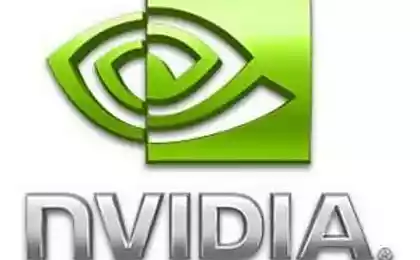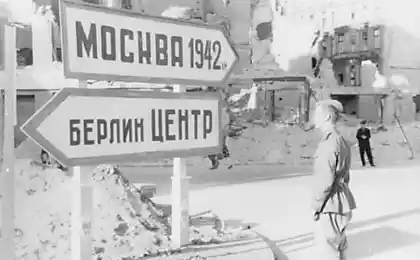819
Netbooks Soviet schoolchildren ...
Writes aquatek-filips:
This post is about netbooks Soviet schoolchildren, office workers and engineers.
Why do I say that? In those days, when I was in school, I had no idea about computers - what they are and what it is.
We simply did not have. But we have calculators.
Almost every one of my classmate wore to school one or another model - algebra, geometry, physics ... these lessons were nowhere without a calculator.
These machines were called calculators - they were solar-powered or mains. Some models even going to cover - just like mobile phones today ...
Already in the early 90's in various places began to appear play computer clubs, where you could pay a ruble or two play Montezuma, Mario or other simulators, and some "cool" classmates Atari or even home ... We Robic. children like to play start typing mode ... Some computer games played ... on calculators.
Yes, yes ... we have programmable calculators on which it was possible to "play". Under the cut, under any photos calculators and I will tell about it ...
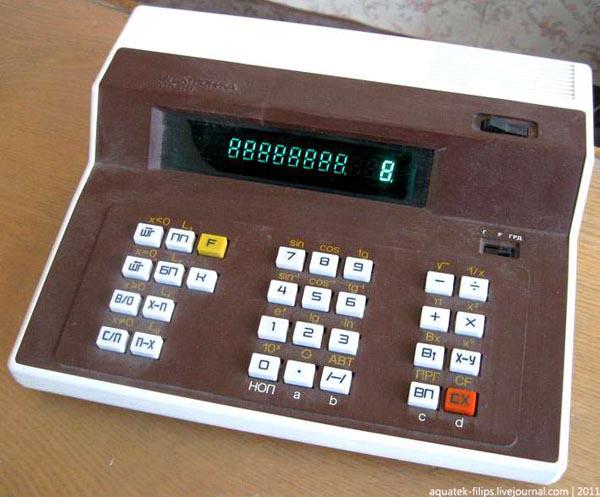
1. Electronics MK-51. Comfortable and functional. From 7 to 11 waste classes with me to school from start to finish
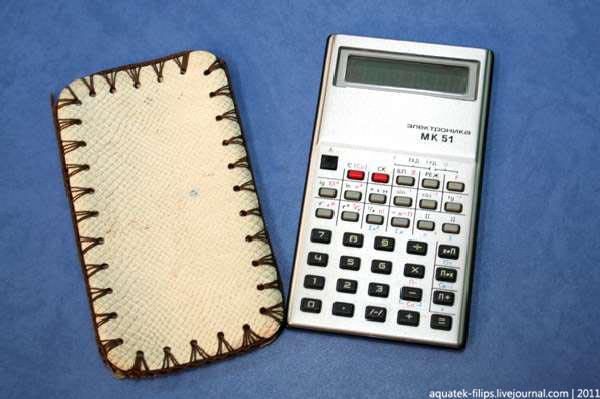
2. Clerical Monster Electronics B3-05 M. He has not had an LCD screen, and the numbers burned thin green thread.
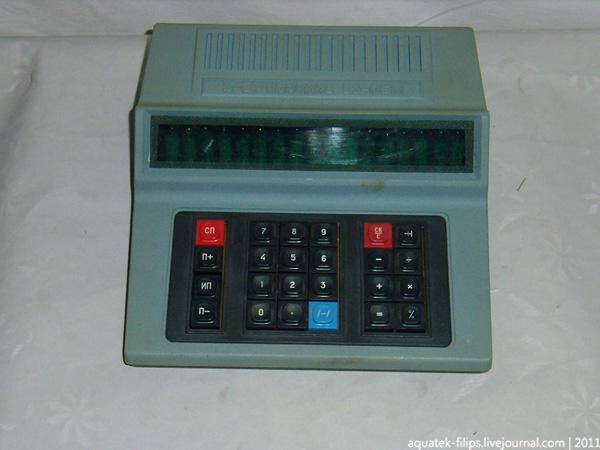
3. Electronics B3-09 M. The unit in the photo was released back in 1976 ...
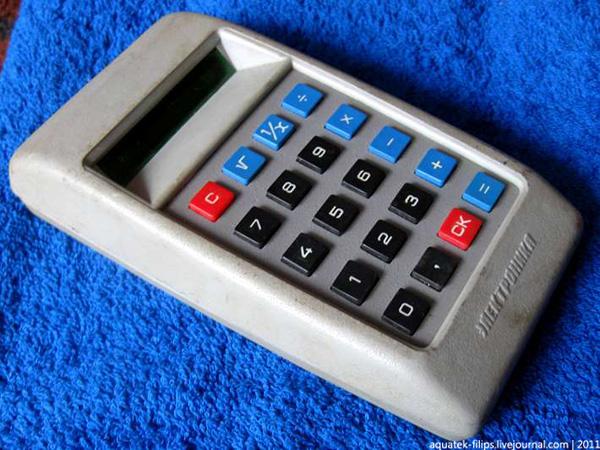
4. Electronics B3-18 A - the first domestic engineering calculators. Produced since 1976
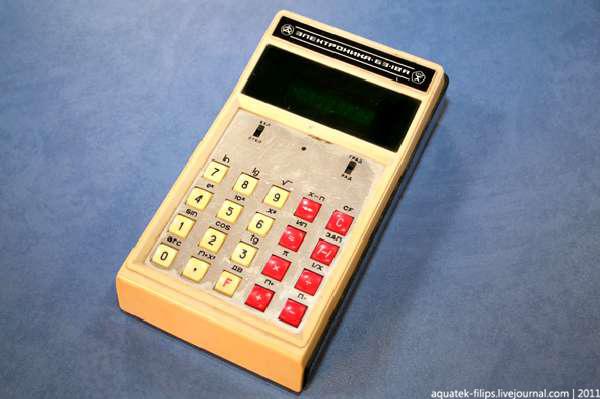
5. Electronics B3-36 calculator. Charging almost like some gamers Sony-Ericsson
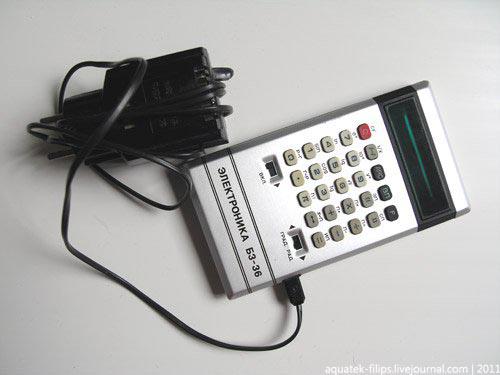
6. Electronics MK-37A
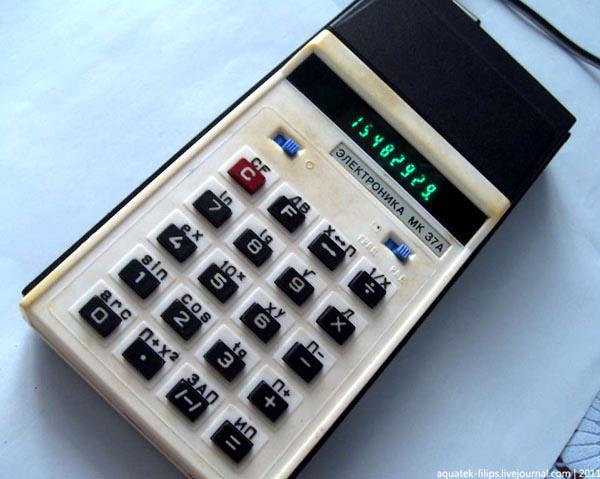
7. Electronics MK-41. Another clerical monster
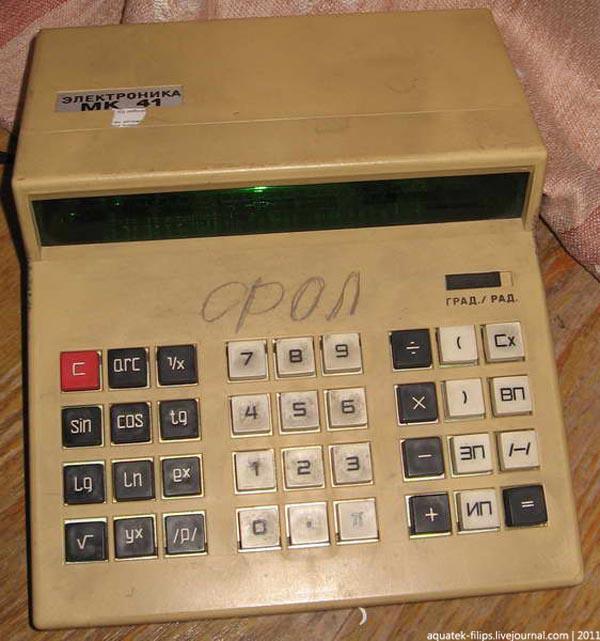
8. Electronics MK-44. And one more. How cheerfully on such accountants repulsed trills, rapidly entering the figures in the yellow sheets of paper ...
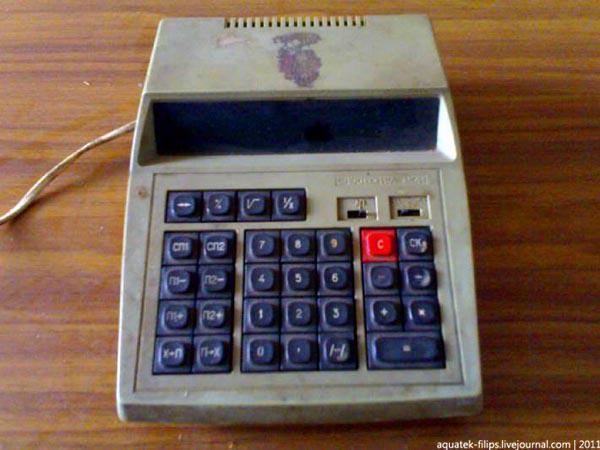
9. Electronics MK-52 - the first Soviet calculator with a non-volatile electrically erasable memory (EEPROM of 4 kbps, the number of write cycles 10000), ensuring the safety program when you turn off the power and functions as a buffer for data exchange with external devices
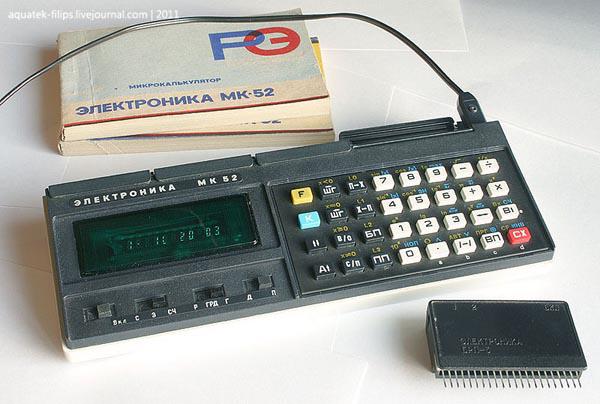
10. Electronics MK-56. Memory 98 teams and 14 registers the speed about 5 simple operations per second. When you turn off the calculator memory contents erased
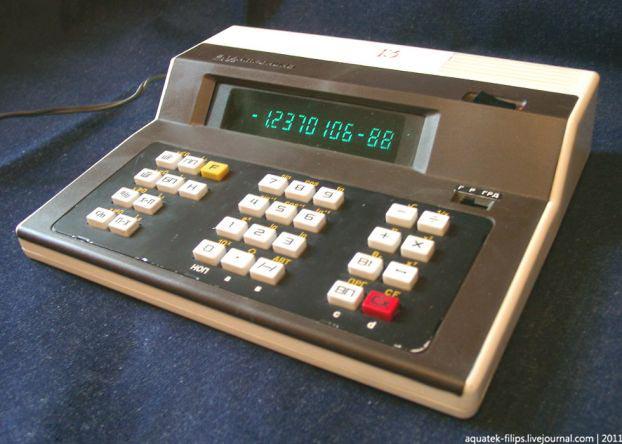
11. Electronics MK-59, manufactured for the national economy and exports))
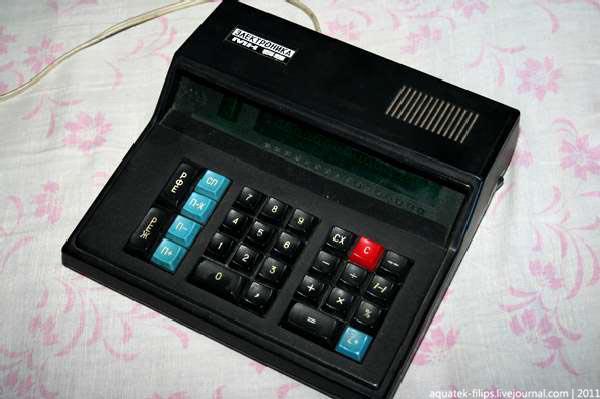
12. Electronics MK-41. Always moved by his form. As if the horse reared
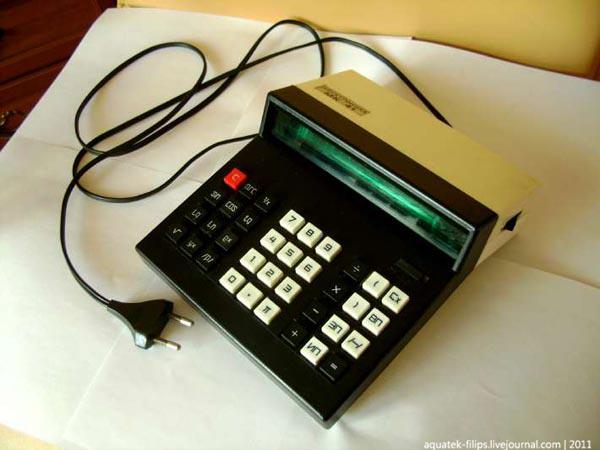
13. Electronics MK-60. The first Soviet calculator powered with solar cells
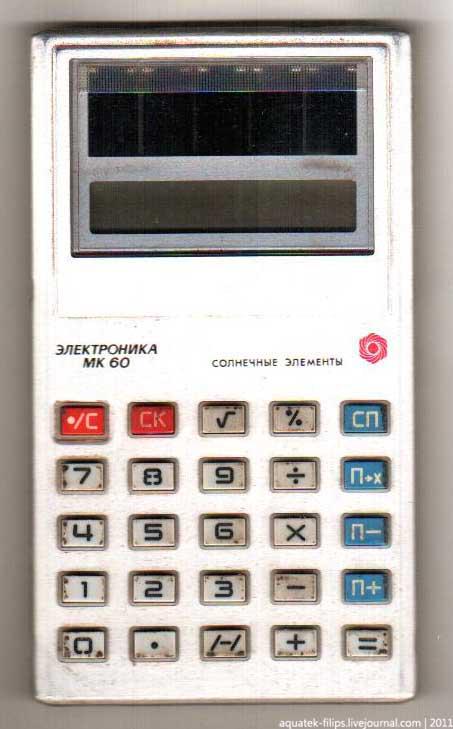
14. Electronics MK-61. Here it is - a programmable calculator, which I "played". If you can call it
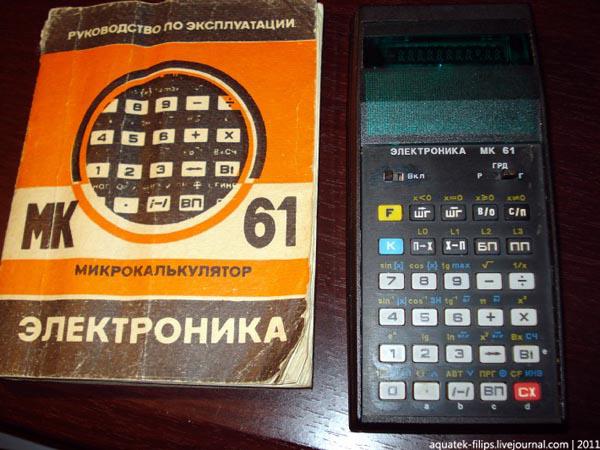
15. He, native
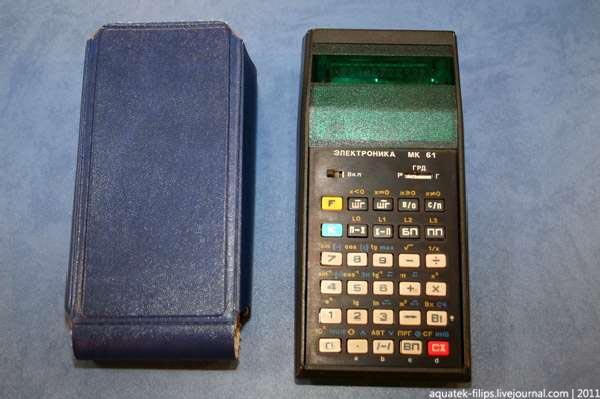
16. Electronics MK-71 - Soviet engineering calculator powered by solar cells. Produced since 1986, the factory Angstrom, priced at 75 rubles. Overall domestic analogue Casio fx-950
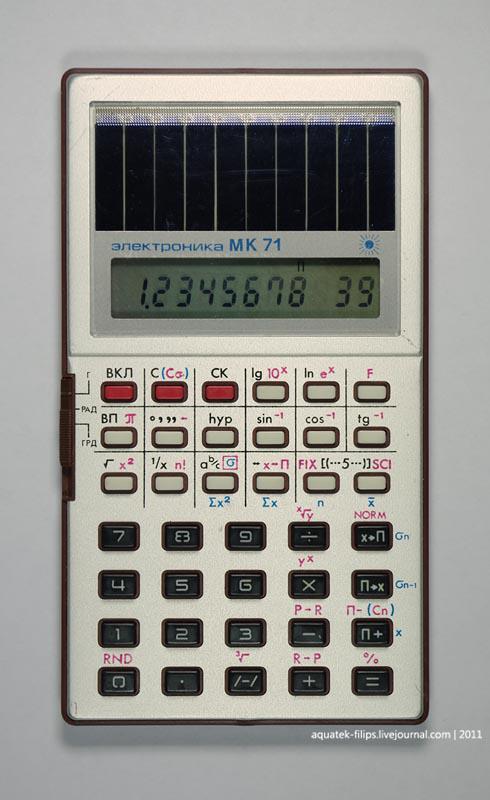
17. Electronics MK-85 - a programmable calculator (microcomputer) with built-in BASIC language interpreter. Produced by the "Angstrom", Zelenograd from 1986 to 2000, was sold in a network of shops "Electronics" at the price of 145 rubles, which at that time was much cheaper than any other computer, equipped with a BASIC interpreter, then the free retail price
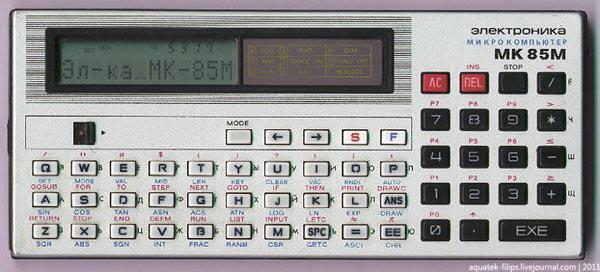
And a little about the games on the programmable calculators.
Games for PMC was a great set. Many of these games are now lost and can not find even among the vast expanses of the Internet.
What exactly are the typical MVP-shnaya game. In order to fully cover all the characteristic features of these games, we will choose some dynamic play, such as "Star fighter-4».
First it was necessary to enter a code. He had this kind of

All this code is entirely accurately entered into the PMK (as we can see by the number of steps - 104 - This program is only suitable for the MK-61 and MK-52). Do not let God make a mistake - finding mistakes will leave a considerable time, unless you're lucky enough to own the MK-52 and do not download this program from the EPROM.
Once the code is entered, it is necessary to fill the register (the variables in PLA). Enter the necessary information in the registers. It is usually printed immediately after the code.
Traditionally, data for inclusion in the register are written in the format of keystrokes. In the case of our game is: "6 hP0; a number from 0 to 1 hP3; 3 hP7; 50 hP8; 69 hP9; 88858893 B? KV 336 542 7 EP CPA; 87 hPB; 59 HPS; 7 F10x HFA. " Recording "hP0 6" in this example means that 0 is stored in the register number 6.
For comparison, imagine that you bought the list (do not drive, and the sheet) with the game Oblivion, and enter it into the computer for items, rather than automatically install from CD ... Now you understand.
Once entered in the registers of all the data, press the "I / O" and "C / R" to run the program with step number 00.
"Star Fighter" - a dynamic game, so now we need to carefully look into the dimly flickering screen. If we are in a room with a surplus of sunlight (or, God forbid, in the open air), then the calculator is best done from a dense canopy of cardboard to shade the flickering light.
So, staring intently into the flicker. First, it is a mess of incomprehensible numbers and symbols, and then has consistently flashes the same video message:
This is a game)))) yes
As we know from the instructions (and be sure to read it before the game to know what is meant by certain bukovki-tsiferki because intuitive graphics is not here):
"8" on the left - nothing significant figure, whose appearance on screen is inevitable (these are the conditions for the creation of video messages PMK);
& quot; - & quot; means enemy unmanned probes;
flashing "8" in the center - our sight;
still there: «L» - light fighters, «C» - average fighter, "G" - heavy fighter, "E" - ships bodyguards (not shown in the illustration).
Goal of the game: Destroy all enemy ships, the Evil Empire. On the destruction of each link is given by 9 strokes. If we are in that time not destroy the link of enemy ships, another link comes to us from the rear and destroys - shows "On Error", which for the majority of PMK-game is an analog of «game over». If we have time to destroy them, then move on to the next link. After the destruction of the last link (ships bodyguards "E") will be evidence of our victory «BLESC-93».
How to make a move, you ask, because after pressing any key on the calculator aborts calculation (and hence the game)? The answer is simple - to move in space using the lever "P-GRD-G." P - left, D - right, GRD - shot.
While flashes we move the lever to the desired position and wait. Calculator produces the desired calculation and here is a new disposition flashes. You can make a new move ...
That such busywork mikrokalkulyatornaya game ...
via aquatek-filips LJ
Source:
This post is about netbooks Soviet schoolchildren, office workers and engineers.
Why do I say that? In those days, when I was in school, I had no idea about computers - what they are and what it is.
We simply did not have. But we have calculators.
Almost every one of my classmate wore to school one or another model - algebra, geometry, physics ... these lessons were nowhere without a calculator.
These machines were called calculators - they were solar-powered or mains. Some models even going to cover - just like mobile phones today ...
Already in the early 90's in various places began to appear play computer clubs, where you could pay a ruble or two play Montezuma, Mario or other simulators, and some "cool" classmates Atari or even home ... We Robic. children like to play start typing mode ... Some computer games played ... on calculators.
Yes, yes ... we have programmable calculators on which it was possible to "play". Under the cut, under any photos calculators and I will tell about it ...

1. Electronics MK-51. Comfortable and functional. From 7 to 11 waste classes with me to school from start to finish

2. Clerical Monster Electronics B3-05 M. He has not had an LCD screen, and the numbers burned thin green thread.

3. Electronics B3-09 M. The unit in the photo was released back in 1976 ...

4. Electronics B3-18 A - the first domestic engineering calculators. Produced since 1976

5. Electronics B3-36 calculator. Charging almost like some gamers Sony-Ericsson

6. Electronics MK-37A

7. Electronics MK-41. Another clerical monster

8. Electronics MK-44. And one more. How cheerfully on such accountants repulsed trills, rapidly entering the figures in the yellow sheets of paper ...

9. Electronics MK-52 - the first Soviet calculator with a non-volatile electrically erasable memory (EEPROM of 4 kbps, the number of write cycles 10000), ensuring the safety program when you turn off the power and functions as a buffer for data exchange with external devices

10. Electronics MK-56. Memory 98 teams and 14 registers the speed about 5 simple operations per second. When you turn off the calculator memory contents erased

11. Electronics MK-59, manufactured for the national economy and exports))

12. Electronics MK-41. Always moved by his form. As if the horse reared

13. Electronics MK-60. The first Soviet calculator powered with solar cells

14. Electronics MK-61. Here it is - a programmable calculator, which I "played". If you can call it

15. He, native

16. Electronics MK-71 - Soviet engineering calculator powered by solar cells. Produced since 1986, the factory Angstrom, priced at 75 rubles. Overall domestic analogue Casio fx-950

17. Electronics MK-85 - a programmable calculator (microcomputer) with built-in BASIC language interpreter. Produced by the "Angstrom", Zelenograd from 1986 to 2000, was sold in a network of shops "Electronics" at the price of 145 rubles, which at that time was much cheaper than any other computer, equipped with a BASIC interpreter, then the free retail price

And a little about the games on the programmable calculators.
Games for PMC was a great set. Many of these games are now lost and can not find even among the vast expanses of the Internet.
What exactly are the typical MVP-shnaya game. In order to fully cover all the characteristic features of these games, we will choose some dynamic play, such as "Star fighter-4».
First it was necessary to enter a code. He had this kind of

All this code is entirely accurately entered into the PMK (as we can see by the number of steps - 104 - This program is only suitable for the MK-61 and MK-52). Do not let God make a mistake - finding mistakes will leave a considerable time, unless you're lucky enough to own the MK-52 and do not download this program from the EPROM.
Once the code is entered, it is necessary to fill the register (the variables in PLA). Enter the necessary information in the registers. It is usually printed immediately after the code.
Traditionally, data for inclusion in the register are written in the format of keystrokes. In the case of our game is: "6 hP0; a number from 0 to 1 hP3; 3 hP7; 50 hP8; 69 hP9; 88858893 B? KV 336 542 7 EP CPA; 87 hPB; 59 HPS; 7 F10x HFA. " Recording "hP0 6" in this example means that 0 is stored in the register number 6.
For comparison, imagine that you bought the list (do not drive, and the sheet) with the game Oblivion, and enter it into the computer for items, rather than automatically install from CD ... Now you understand.
Once entered in the registers of all the data, press the "I / O" and "C / R" to run the program with step number 00.
"Star Fighter" - a dynamic game, so now we need to carefully look into the dimly flickering screen. If we are in a room with a surplus of sunlight (or, God forbid, in the open air), then the calculator is best done from a dense canopy of cardboard to shade the flickering light.
So, staring intently into the flicker. First, it is a mess of incomprehensible numbers and symbols, and then has consistently flashes the same video message:
This is a game)))) yes
As we know from the instructions (and be sure to read it before the game to know what is meant by certain bukovki-tsiferki because intuitive graphics is not here):
"8" on the left - nothing significant figure, whose appearance on screen is inevitable (these are the conditions for the creation of video messages PMK);
& quot; - & quot; means enemy unmanned probes;
flashing "8" in the center - our sight;
still there: «L» - light fighters, «C» - average fighter, "G" - heavy fighter, "E" - ships bodyguards (not shown in the illustration).
Goal of the game: Destroy all enemy ships, the Evil Empire. On the destruction of each link is given by 9 strokes. If we are in that time not destroy the link of enemy ships, another link comes to us from the rear and destroys - shows "On Error", which for the majority of PMK-game is an analog of «game over». If we have time to destroy them, then move on to the next link. After the destruction of the last link (ships bodyguards "E") will be evidence of our victory «BLESC-93».
How to make a move, you ask, because after pressing any key on the calculator aborts calculation (and hence the game)? The answer is simple - to move in space using the lever "P-GRD-G." P - left, D - right, GRD - shot.
While flashes we move the lever to the desired position and wait. Calculator produces the desired calculation and here is a new disposition flashes. You can make a new move ...
That such busywork mikrokalkulyatornaya game ...
via aquatek-filips LJ
Source:










